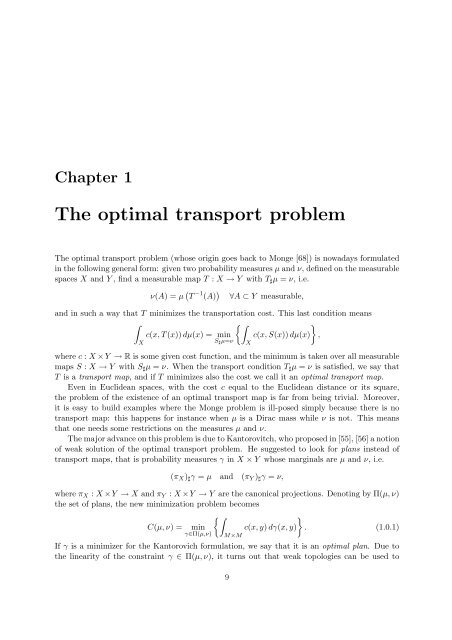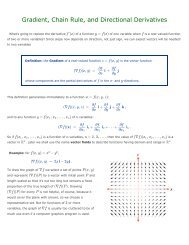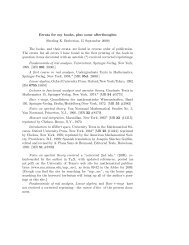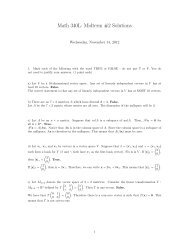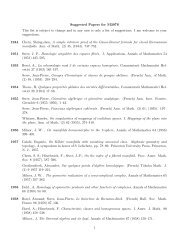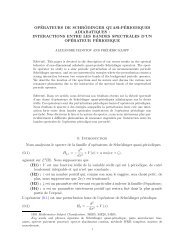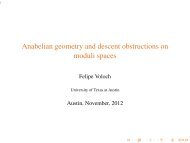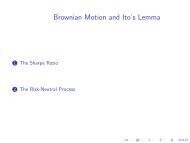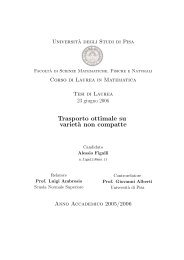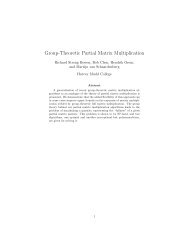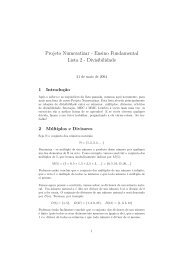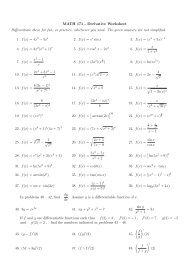Optimal transport, Euler equations, Mather and DiPerna-Lions theories
Optimal transport, Euler equations, Mather and DiPerna-Lions theories
Optimal transport, Euler equations, Mather and DiPerna-Lions theories
Create successful ePaper yourself
Turn your PDF publications into a flip-book with our unique Google optimized e-Paper software.
Chapter 1<br />
The optimal <strong>transport</strong> problem<br />
The optimal <strong>transport</strong> problem (whose origin goes back to Monge [68]) is nowadays formulated<br />
in the following general form: given two probability measures µ <strong>and</strong> ν, defined on the measurable<br />
spaces X <strong>and</strong> Y , find a measurable map T : X → Y with T♯µ = ν, i.e.<br />
ν(A) = µ T −1 (A) <br />
∀A ⊂ Y measurable,<br />
<strong>and</strong> in such a way that T minimizes the <strong>transport</strong>ation cost. This last condition means<br />
<br />
<br />
<br />
c(x, T (x)) dµ(x) = min<br />
S♯µ=ν<br />
c(x, S(x)) dµ(x) ,<br />
X<br />
where c : X × Y → R is some given cost function, <strong>and</strong> the minimum is taken over all measurable<br />
maps S : X → Y with S♯µ = ν. When the <strong>transport</strong> condition T♯µ = ν is satisfied, we say that<br />
T is a <strong>transport</strong> map, <strong>and</strong> if T minimizes also the cost we call it an optimal <strong>transport</strong> map.<br />
Even in Euclidean spaces, with the cost c equal to the Euclidean distance or its square,<br />
the problem of the existence of an optimal <strong>transport</strong> map is far from being trivial. Moreover,<br />
it is easy to build examples where the Monge problem is ill-posed simply because there is no<br />
<strong>transport</strong> map: this happens for instance when µ is a Dirac mass while ν is not. This means<br />
that one needs some restrictions on the measures µ <strong>and</strong> ν.<br />
The major advance on this problem is due to Kantorovitch, who proposed in [55], [56] a notion<br />
of weak solution of the optimal <strong>transport</strong> problem. He suggested to look for plans instead of<br />
<strong>transport</strong> maps, that is probability measures γ in X × Y whose marginals are µ <strong>and</strong> ν, i.e.<br />
(πX)♯γ = µ <strong>and</strong> (πY )♯γ = ν,<br />
where πX : X ×Y → X <strong>and</strong> πY : X ×Y → Y are the canonical projections. Denoting by Π(µ, ν)<br />
the set of plans, the new minimization problem becomes<br />
<br />
<br />
C(µ, ν) = min<br />
γ∈Π(µ,ν)<br />
c(x, y) dγ(x, y) . (1.0.1)<br />
M×M<br />
If γ is a minimizer for the Kantorovich formulation, we say that it is an optimal plan. Due to<br />
the linearity of the constraint γ ∈ Π(µ, ν), it turns out that weak topologies can be used to<br />
9<br />
X


